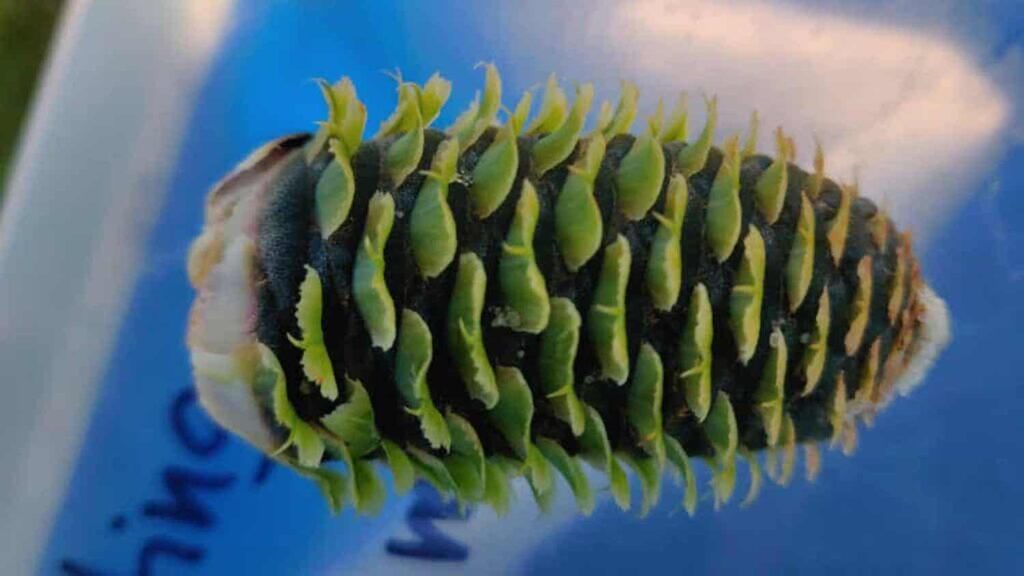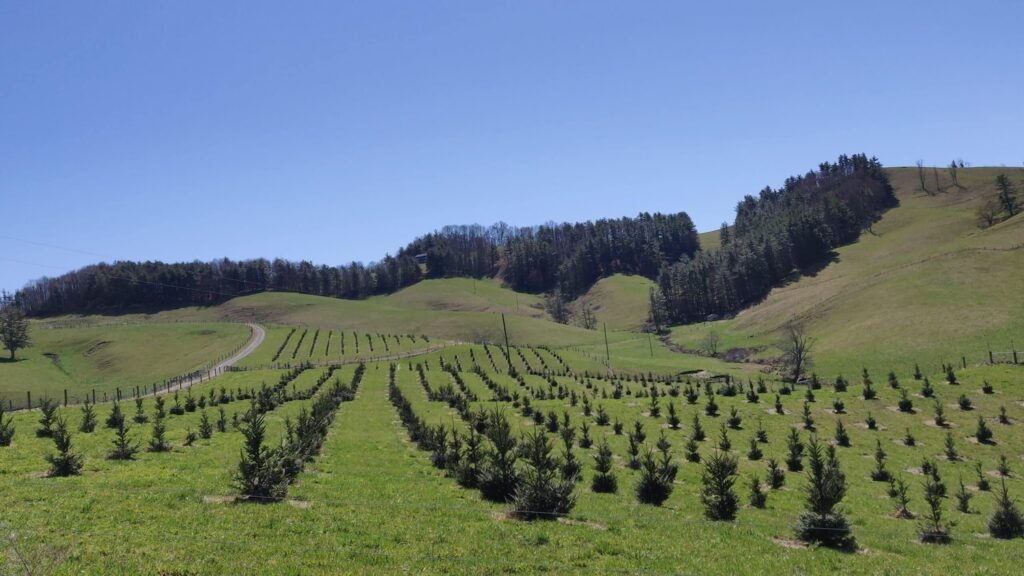Growing Christmas Trees for the Future
go.ncsu.edu/readext?1028142
en Español / em Português
El inglés es el idioma de control de esta página. En la medida en que haya algún conflicto entre la traducción al inglés y la traducción, el inglés prevalece.
Al hacer clic en el enlace de traducción se activa un servicio de traducción gratuito para convertir la página al español. Al igual que con cualquier traducción por Internet, la conversión no es sensible al contexto y puede que no traduzca el texto en su significado original. NC State Extension no garantiza la exactitud del texto traducido. Por favor, tenga en cuenta que algunas aplicaciones y/o servicios pueden no funcionar como se espera cuando se traducen.
Português
Inglês é o idioma de controle desta página. Na medida que haja algum conflito entre o texto original em Inglês e a tradução, o Inglês prevalece.
Ao clicar no link de tradução, um serviço gratuito de tradução será ativado para converter a página para o Português. Como em qualquer tradução pela internet, a conversão não é sensivel ao contexto e pode não ocorrer a tradução para o significado orginal. O serviço de Extensão da Carolina do Norte (NC State Extension) não garante a exatidão do texto traduzido. Por favor, observe que algumas funções ou serviços podem não funcionar como esperado após a tradução.
English
English is the controlling language of this page. To the extent there is any conflict between the English text and the translation, English controls.
Clicking on the translation link activates a free translation service to convert the page to Spanish. As with any Internet translation, the conversion is not context-sensitive and may not translate the text to its original meaning. NC State Extension does not guarantee the accuracy of the translated text. Please note that some applications and/or services may not function as expected when translated.
Collapse ▲[View full original post from College of Natural Resources News]
With nearly $7.5 million in funding, NC State is leading a project to accelerate the genetic improvement of Christmas trees across the United States.
Many Christmas traditions and celebrations take place around Fraser fir trees grown in the southern Appalachian Mountains of North Carolina, where 1 of every 4 live Christmas trees in the U.S. are grown. North Carolina ranks No. 2 in the nation in annual Christmas tree production.
Unfortunately, climate change is leading to increased insect and disease outbreaks that cause significant losses to the Christmas tree industry.
The NC State Christmas Tree Genetics Program has spent decades working to develop “elite” Fraser fir trees capable of withstanding these climate-related impacts. Now the program is one step closer to achieving its goal thanks to a nearly $7.5 million, four-year grant awarded by the USDA’s National Institute of Food and Agriculture. The grant is one of four NC State projects receiving a total of $18.3 million in USDA funding.

Growers collect Fraser fir cones by the bushel in late August and early September. A bushel can yield up to 180,000 seeds.
“This project represents the best chance for not only Fraser fir but the major Christmas tree species grown around the United States to be rapidly adapted for future climates,” said Justin Whitehill, NC State Extension specialist and director of the Christmas tree genetics program.
Whitehill has assembled a team of experts from around the world to oversee five objectives aimed at advancing the program’s mission. As part of the first objective, Whitehill and his collaborators will work to develop genome sequences for key Christmas tree species to identify the genetic relationships among fir trees growing across the U.S. A genome is an organism’s complete set of DNA, including all of its genes.
Tree breeding can be carried out artificially using controlled techniques in seed orchards, but this process is slow and complicated further by the unique biology of firs. It currently requires 25-30 years to complete the breeding cycle for a single generation of genetically-improved Fraser firs.
Additionally, the Christmas tree industry is much younger than other economically important crops. This factor, combined with the long breeding cycles, means researchers need access to modern technologies that can help keep pace with this rapidly changing industry.
Creating a ‘23andMe’ for Fraser Firs
Given the challenges, the researchers plan to use the information coded into the Christmas tree genome to reconstruct the parental relationships between individual Fraser fir trees. This approach will allow them to create a paternity test for the species. The researchers have already sequenced the genome of the Fraser fir.
By reconstructing the genetic relationships for Fraser fir trees, Whitehill and his collaborators will be able to identify trees with the best genetics and predict which trees will do best in the next generation. Once the researchers fully understand the parental lineage of the trees, they can determine which trees are siblings.

NC State researchers planted genetically-improved Fraser fir seeds at the Upper Mountain Research Station in Ashe County in 2018. The trees should be ready for commercial harvest by 2028.
The team can then measure the trees in the field to identify which combination of genetics not only produces the fastest growing and most valuable trees, but also which trees will be able to withstand climate change, disease and other threats.
“Essentially what we’re doing is creating a ‘23andMe’ for these trees to figure out their familial relationships and understand what their genetics can tell us about a wide range of important characteristics,” Whitehill said. “This will allow us to provide Christmas tree growers with guidance on which trees should be planted to combat potential negative impacts — including climate change and disease — while also increasing their bottom line.”
Ultimately, the project will increase national and international competitiveness, improve consumer outlook regarding industry sustainability and reduce the impact of economic losses annually due to climate, pest and pathogen challenges.
The project is expected to be completed by 2028.
Read the full original post at College of Natural Resources News.
RELATED

